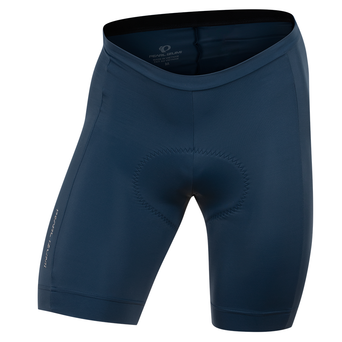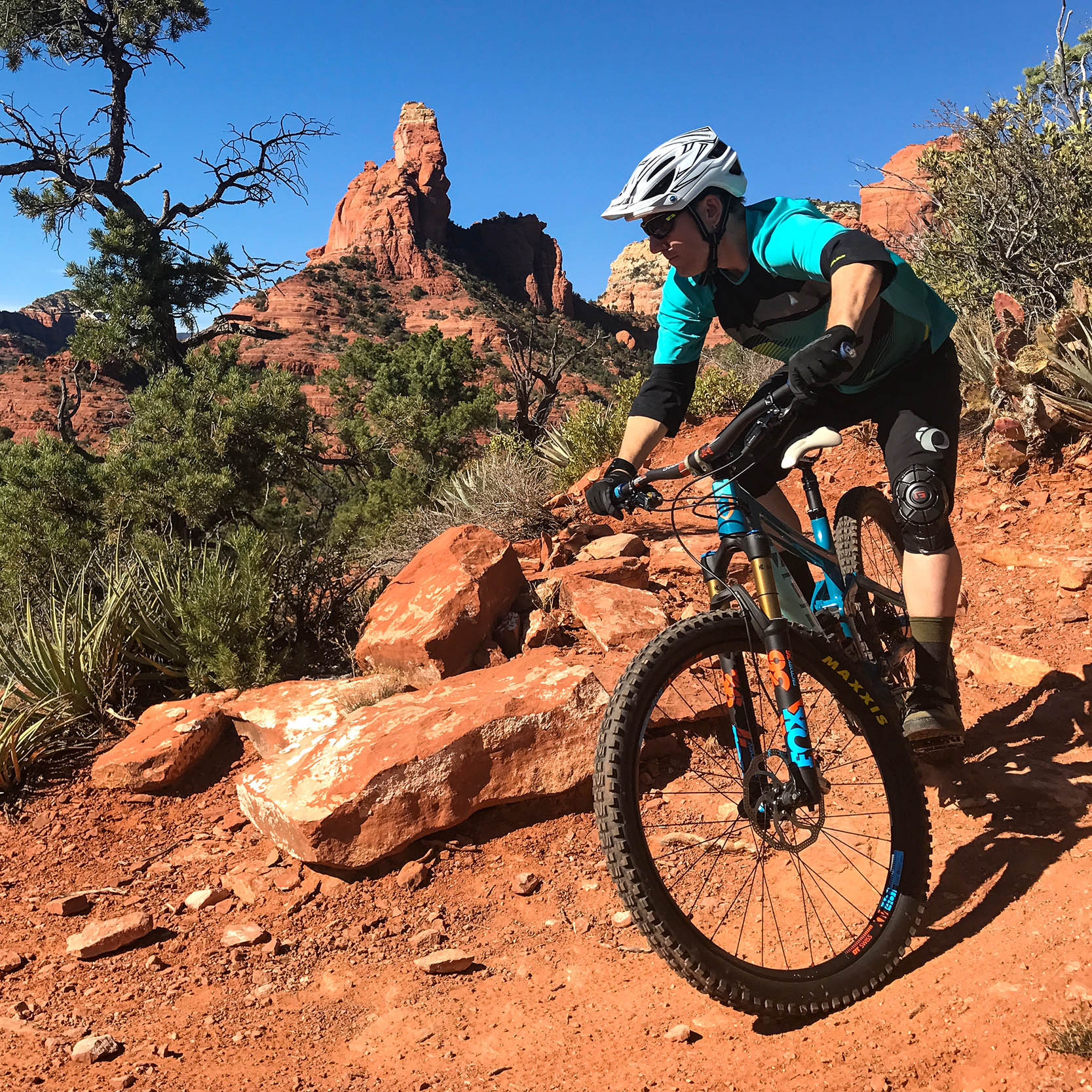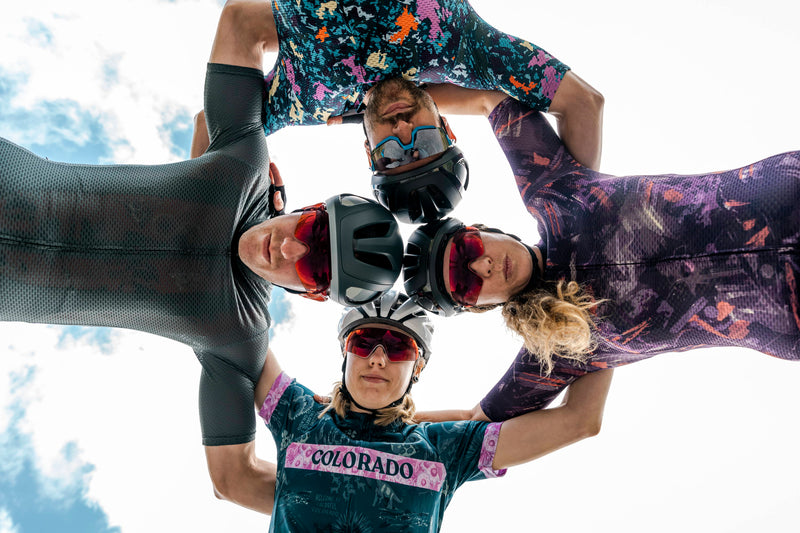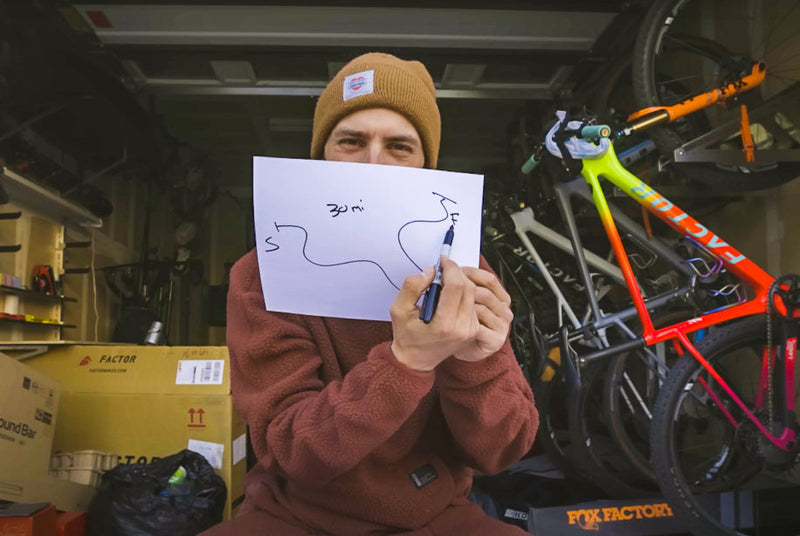As the New Year comes into sight, cyclists everywhere are thinking about their goals for the coming season. Perhaps it’s starting a racing career, upgrading to the next category or just putting the hurt on their buddies. Non-competitive folks may be preparing for a big bucket-list ride or bikepacking trip.

No matter the end result, one of the key ways of getting there is to train your weaknesses. Every rider has something — usually several things — preventing them from reaching their full potential. The offseason presents the perfect time to address them.
“If you’re doing the same thing every year, you’re not going to get better. In fact, you’ll likely face injuries and mediocre performance,” said Dee Tidwell, owner, fitness coach, and biomechanist at Enduro MTB Training. “It makes no sense year after year to keep training your strengths. It perpetuates the same non-improvement.”
A great place to start is with flexibility and mobility since we all suffer the stresses of our sport. Add in the fact that most people sit too much, and it’s inevitable that there are flaws in body mechanics, joint mobility and muscle flexibility.
“As I tell my clients, the foundation of performance enhancement is pain-free, efficient movement,” said Dane DeLozier, co-founder, physical therapist and Sports Science Lab Director at REVO Physiotherapy and Sports Performance in Boulder, Colo. “If you aren’t able to use quality movement patterns in a pain-free manner, forget supplements, forget carbon everything on your bike, you are leaving your performance and fun on the table right off the bat.”
Getting a physical assessment will clarify where your issues lie, but typically, DeLozier said, mobility problems in cyclists affect the hips, thoracic spine and shoulders. As riders neglect these restrictions, pain will rear its ugly head, often followed by compensations and injury. “All overuse injuries have a component of movement dysfunction as a root cause,” said DeLozier. “We can only compensate for inefficient motor control for so long before causing a failure in the system.”
For many people, working on this stuff has a pretty good payoff. “Improved performance is another very common benefit of improving motor control and mobility,” DeLozier said. “You have more power or endurance, seemingly without changes in training load. This is all about efficiency.”
After looking at your mobility, you can assess your training focus. For mountain bikers, Tidwell has his own top three concerns.
First is a tendency to put in too much bike time in relation to gym time in the off-season. “They overuse themselves on the bike, while the gym is the best place to get stronger, have more power, strength and endurance, plus mobility,” he said. “If you’ve already got good cardio capacity, you can’t just ride yourself into getting better.”

Second is constantly working on the same strengths. If you’re a great climber and all you love to do is hill repeats, you’re not getting any better at your poor descending, for example. “Many people don’t like to challenge themselves in their weak area because of fear,” Tidwell said. “If they’re afraid of tough descents, I want to help them strategically work on it.”
Finally, have a plan — meaning, one created specifically for you. Generic training plans are helpful (Tidwell offers them himself), but to really crush your weaknesses, get physical assessments and workouts that address them head-on. There’s also a mental benefit to be had. “Teaching people about themselves empowers them to be more motivated because they understand it better,” he said.
For road/gravel/triathlon riders, Neal Henderson, sports scientist and founder of APEX Coaching, offers a few items to consider. One is a tendency to ride with others and let them dictate the intensity, especially in those group rides where everyone wants to hammer. “There’s a time and place for that, but doing some specific work relative to your own capacity will do a lot more for you,” he said. Many experienced riders also over-focus on a high number of training hours. “If you have a big foundation from many years of training, you don’t always need that volume. You need intensity and strength.”
Where strength is concerned, Henderson says all athletes need to have gym time in their training schedule, but most especially masters riders. “We all know that muscle mass declines with age, and too much endurance training actually makes it worse.” He recommends focusing on lifting heavier weights, while avoiding the typical low-weight/high-rep workouts that aren’t much different than riding your bike.
And of course, there’s time off. “Undervaluing rest and recovery is a huge thing with all endurance athletes,” he said. “It’s always a recipe for a lack of progress. It’s only when you rest and recover that you have adaptation and become stronger.”
Finally, skills development presents another great opportunity to improve performance, says Lee McCormack, a mountain bike skills coach and author with Lee Likes Bikes and RideLogic. “I’ve learned that very high performance isn’t magic, it’s the execution of some really fundamental skills. If you work on the fundamentals, the improvements can be staggering if you practice well.”
Many people don’t work on skills because of limited training time, McCormack says. “The best way to integrate skills into your life is to fold it into the training you’re already doing. It’s totally okay to do the same rides you always do but focus on some aspect of your technique that needs work.” You can also use trainer time to work on pedaling skills (a typical area of lost power), combine outdoor intervals with high-speed cornering drills, etc. “Put your mind on your body and pay attention. You’ll get way more out of that time investment,” McCormack said.
Ignoring skills deficits can have serious consequences for all riders. As speed and intensity increase during a race, weak spots in bike handling will be magnified, potentially leading to crashes and injury.
Before they can work in this area, riders must accept that they have gaps in their skill set. “People may think they’re already awesome, and they don’t think they need to work on themselves,” McCormack said.
Additionally, he references the Dunning-Kruger effect, a cognitive bias in which people of lower ability mistakenly assess their ability as greater than it is. This misperception usually stems from an incomplete understanding of a given activity’s standards of performance. For example, cornering is an area where many riders lack the knowledge they need. They haven’t been taught the physics behind what makes a bike turn, and what’s required to ride through turns at high speed. Therefore they think they corner just fine and have no idea how much faster they could be riding.
Skills development also provides what’s possibly the best payoff of all — increasing the joy we find in our sport. “In riding, you’re flirting with flow all the time, and you could find yourself on another plane of enjoyment,” McCormack said.
So, all this analysis of weaknesses is great, but let’s face it: we’re human, and often we don’t enjoy doing things we’re bad at, or things that aren’t any fun. It’s likely that as the new year rolls around, we might pledge to do better. But we all know how well New Year’s Resolution-style goal-setting works. Most people make it a little while before the well of forced impetus runs dry, even with the best of intentions.
“For a lot of people, it’s daunting to work on our weaknesses, because we look at our strengths and think we have to reach that same standard,” says Dr. Jason Richardson, psychologist, coach and former world champion BMX racer. “Then when we don’t perform the way we want, that’s when the negative self-talk starts.”

He encourages people to remember that they don’t need to be better than their competitors in their weak area — they only need to be better than they were yesterday. “Focus on the incremental gains, and find a way to ‘game-ify’ it so you set yourself up for a personal win.”
For this approach, set a goal for whatever you’re working on — say, doing mobilization exercises three times a week. Keep it quick and easy so the time commitment is small. Give yourself a mental “point” for every time you do it, and see how long you can keep the streak going. “You end up creating a habit and standard for yourself, where you can condition yourself to want to see your own progress,” Richardson said.
A useful trick for riding-specific weaknesses is visualization. “If you can visualize yourself on that climb you hate, even if you’re cursing, that’s what I want,” Richardson said. “I want you to see yourself doing it. Then when you actually do it, it won’t be so bad. It’s the emotional avoidance that’s the problem.”
Henderson advises, “Try focusing on a weakness in the beginning of a workout, then finish on something you enjoy. You can also find someone who is good at your weakness and learn a little from them.”
With practical strategies in your back pocket, you’ve got a better chance of delivering on your big plans for 2019. Consider which things you’ll regret not doing, and remember Dee Tidwell’s advice: “Ultimate goals all trickle down to daily steps.”







Comments